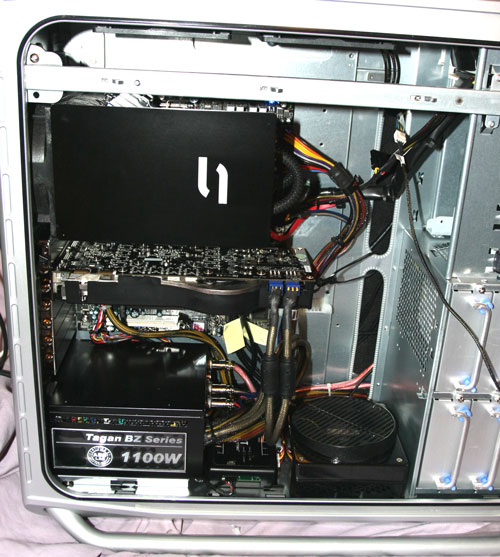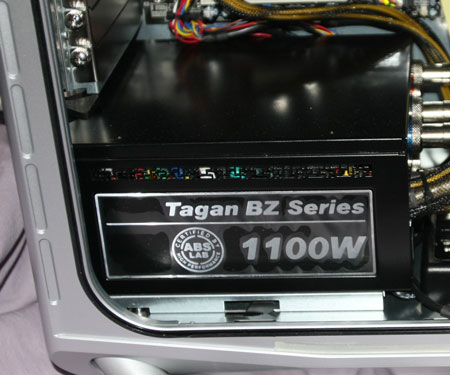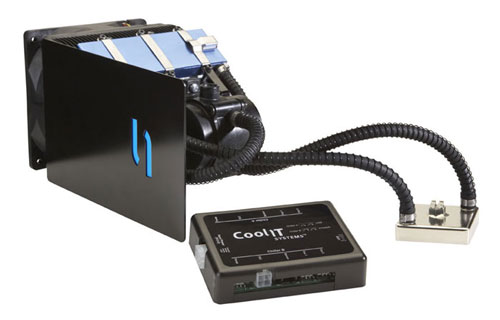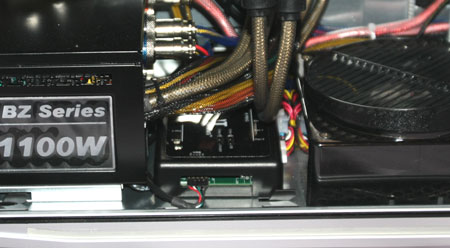The ESA Box

The ESA test system is built around certified ESA hardware, and the heart of the test system is the EVGA 122-CK-NF68 motherboard powered by the NVIDIA 680i chipset. Frankly, the use of the 680i chipset for the ESA test system was a bit of a surprise, since it was expected that ESA certification would begin with the 780 series. However, if you have been following motherboard developments at AnandTech you are already aware that the birth of 780 and 790 has not been an easy one.
In the interest of eliminating new variables in the equation, NVIDIA built the test ESA box on a 680i chipset board. Work is nearly complete on 780 and 790 boards that will become the heart of ESA, and as soon as they are ready ESA will be evaluated from a performance standpoint. NVIDIA has clearly stated that their goal with ESA is that overclocking performance will be just as good with the ESA interface as it is on the same board using the BIOS tuning parameters.

The test system is wrapped in a Cooler Master Cosmos case. However, this is not the standard Cosmos 1000, it is a special ESA version with added abilities for ESA fan control and temperature monitoring. With a case that comes with two top-mounted 120mm fans, a bottom facing 120mm, and a side 120mm fan the desire for central control should be obvious. The Cosmos ESA is marketed as the model 1010, and you can find it available at Newegg and other etailers.

A Tagan 1100w modular power supply is power central for the ESA box. The Tagan PSU is remarkably compact considering the hefty power rating.

CoolIT keeps the Intel E6850 dual-core CPU nice and cool with their hybrid self-contained water and TEC (Thermal Electric Cooling) Freezone Elite. The MTEC Control Center is the black box in the picture, and it is the system status monitor and control module for this ESA certified component.

Inside the case, the MTEC module is neatly mounted between the Tagan PSU and the 120mm bottom fan module.
Storage comes courtesy of a pair of Western Digital Raptor 10,000RPM drives in a RAID 0 configuration. Corsair provides 2GB of DDR2 Dominator memory certified for DDR2-1066 duty, and Windows Vista Ultimate is the system OS.
The ESA test system is loaded for bear and certainly contains enough horsepower to bring a smile to the face of any computer enthusiast. If there was ever a system that screamed, "push me to the limits", this is certainly it.










19 Comments
View All Comments
cdl1701 - Friday, February 22, 2008 - link
Should there be pics in this write up? I am not seeing anyinitialised - Wednesday, February 20, 2008 - link
But using this to implement closed loop control for your overclocking and cooling setup is taking things to another level. e.g. Twc -> 1C fans -> 100RPM & Pump -> 10lph or Tcpu -> 1C Vtec -> 0.2V or more radical fps < 30 & fcore/fmem/fshader=stable, fcore/fmem/fshader -> 25MHz fan -> 10%.Most PC cooling is either crude or expensive. An OS independent control system like this with true dynamic control of BIOS CPU and Memory and GPU settings and cooling would be fantastic and could be done if crashes due to overheating/clocking can be handled before windows BSOD's. Needs a graphic (LabVIEW style) interface and low overhead though.
Hopefully it can be retrofitted to older motherboards and graphics cards with BIOS/driver updates.
Tristesse27 - Wednesday, February 20, 2008 - link
"To be fair, NVIDIA made it very clear that the current test system was put together to demonstrate the monitoring capabilities of ESA with no real finalizing of performance tweaking in ESA."Then to be perfectly fair, why would you even mention that it crashed when you try to tweak through the OS? They told you it wouldn't work, and it doesn't. I bet when the waiter tells you the plate is hot, you put your hand right on it, don't you?
stevekgoodwin - Tuesday, February 19, 2008 - link
So... turns out SMART has been subverted by various HDD manufacturers to misreport problems (because problems that might hurt sales). Which pretty much makes SMART useless.What's to stop this going the same way? There's no guarantee components are not distorting/faking results.
It'll be an interesting one to watch.
Kevin Day - Tuesday, February 19, 2008 - link
Could you imagine the kind of information you could gather on your corporate machines if someone wrote a plugin for say System Center Operations Manager? You could monitor client health not only from an applications perspective, but from the hardware as well. You could, for instance, detect a power supply that was having voltage fluctuations and replace it BEFORE it fails saving the user much down time.IKeelU - Tuesday, February 19, 2008 - link
Sorry if this has been address before, but will ESA interfaces be available for hardware that is not related to nVidia (e.g. intel chipsets, etc...)? It would be great to have a relatively consistent interface between manufacturers, similar to what a BIOS is now. If not, then I will definitely be swayed to the nVidia mobo camp. Being able to change profiles without going into the bios is going to be awesome. It's not like I need my C2D running on max overclock to use uTorrent or MS Word.Is there any chance of AMD adopting this? Does the spider platform cover most of what ESA does?
Wesley Fink - Wednesday, February 20, 2008 - link
NVidia is not charging licensing fees for ESA and the USB standard, with ESA approved to sit on top of that standard, is an Open Standard. Anyone who wishes could use ESA, and there don't appear to be unsurmountable artificial barriers to any computer manufacturer using ESA technology.LSnK - Tuesday, February 19, 2008 - link
"This begs the question of whether ESA is working now."Raises the question. Begging the question is the name of a logical fallacy wherein one assumes to be true that which they're supposed to be arguing.
Wesley Fink - Wednesday, February 20, 2008 - link
"Begs the question" expresses my thoughts.Slaimus - Tuesday, February 19, 2008 - link
Isn't there already a much more well established ESA, the Entertainment Software Association?